? ? Sun news for Apr 25, 2024: 6 M flares, aurora on the way
? ?Solar activity high, 6 M flares over the past day.
?G1/higher geomagnetic storms are still expected.
?? MORE at EarthSky: https://t.co/xD29wLfm4e pic.twitter.com/fZEw5h5mWT
— Dr. C. Alex Young (@TheSunToday) April 25, 2024
Sun news for April 25, 2024: 6 M flares, aurora on the way
Today’s top story: Solar activity remains high after an impressive 6 M flares were fired over the past 24 hours. All but 1 of these M flares came from a huge complex of sunspot groups in the sun’s southwest. This complex has brought us some great action this week, but it’s soon to rotate out of view over the western limb (edge). Meanwhile, action is expected at Earth today, with G1 (minor) or higher geomagnetic storms expected later today through tomorrow. And that means possible auroral displays! The disturbance is due to the effects of coronal mass ejections (CMEs) flying past our planet, combined with fast solar wind from one of the three coronal holes currently on the sun’s visible face. Good luck, aurora-watchers!
Last 24 hours: We’ve observed long, beautiful jets in the northwest over the past day, while prominences have been dancing all around the solar limb (edge). The sun produced 21 flares between 11 UTC yesterday and 11 UTC today: six M flares and 15 C flares. The largest event was an M2.0 flare by active region AR3637 at 22:59 UTC on April 24. The list of the M flares of the past 24 hours is:
M1.5 by AR3645, 12:14 UTC on April 24. R1 (minor) radio blackout over . R1 (minor) radio blackout over west coast of Africa.
M1.1 by AR3647 at 22:50 UTC on April 24. R1 (minor) radio blackout over the Pacific Ocean.
M2.0 by AR3637 at 22:59 UTC on April 24. R1 (minor) radio blackout over the Pacific Ocean. (Largest event)
M1.0 by AR3645 at 01:49 UTC on April 25. R1 (minor) radio blackout over the Philippine Sea.
M1.0 by AR3645 at 02:27 UTC on April 25. R1 (minor) radio blackout over the Philippine Sea.
M1.1 by AR3648 at 03:15 UTC on April 25. R1 (minor) radio blackout over the Philippine Sea.
The lead flare producer of the day was AR3648 with six C flares. Sunspot region AR3638 produced two M flares. Today all active regions on the Earth-facing solar disk are showing either an alpha or beta magnetic configuration, indicating a lowered potential for flaring in the coming day. They all are stable or in decay. The sun currently has 12 sunspot groups on its Earth-facing side. A newcomer emerged on the southwest quadrant. It is now numbered AR3658.
Next 24 hours: The chance for C flares is 99%. The chance for M flares is 75%. The chance for an X flare is 15%.
Next expected CME: No new coronal mass ejections (CMEs) observed in available imagery during the past few day.
Current geomagnetic activity: Earth’s magnetic field is quiet at the time of this writing (11 UTC on April 25). A quiet to unsettled level is anticipated for today through tomorrow April 26 due to the effects of high-speed solar wind from the three coronal holes now on the sun’s visible face, combined with passing CMEs in the vicinity of Earth. G1 or greater geomagnetic storming is expected despite no obvious Earth-directed events.
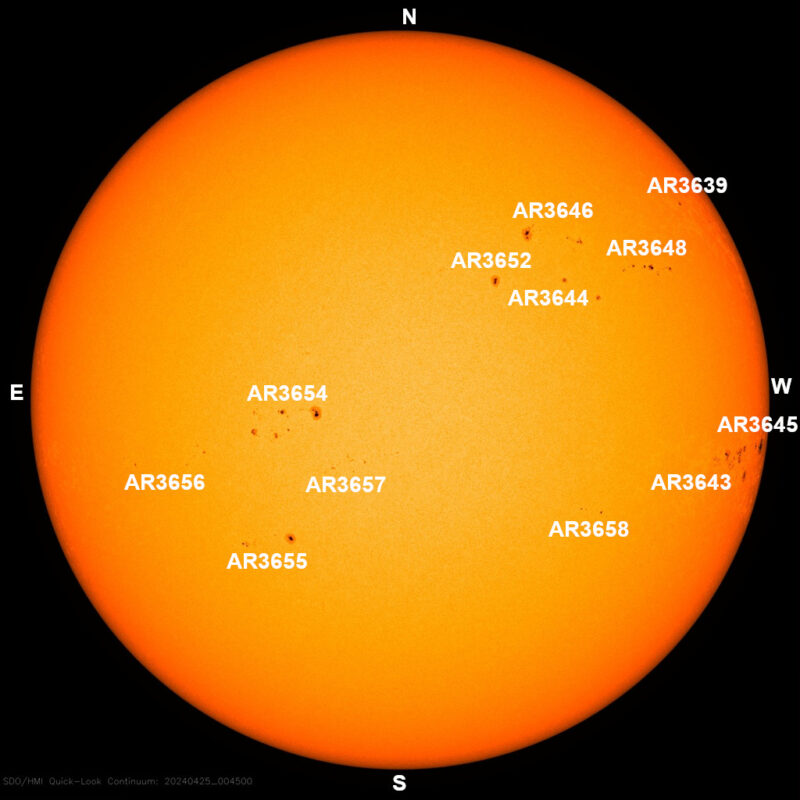
The EarthSky sun news team created this 1-minute video summary for you.
Sun news for April 24, 2024: HIGH activity, with sun-stuff coming
Today’s top story: Activity remains high today! Over the past day, we had five M flares, four fewer than the day before. All the M flares came from the big sunspot complex in the sun’s southwest quadrant. This region is also continuing to produce long, beautiful jets. In the past day, we saw prominences dancing all around the visible sun. And a filament erupted in the sun’s northeast, which sent material northward away from Earth. Meanwhile, starting tonight, we are anticipating glancing blows to Earth from perhaps up to a dozen smaller coronal mass ejections, aka CMEs. These chunks of sun-stuff will likely only sideswipe us. And, because there are multiple chunks, the timing of their effects is difficult to pin down. But any effects will be combined with fast solar wind from one of the three coronal holes currently on the sun’s visible face. So we’re anticipating geomagnetic storming at the G1 (minor) level, or higher, starting tonight and into April 26. Good luck, aurora-watchers!
Last 24 hours: Overall activity has decreased with five M flares in the past day (11 UTC yesterday to 11 UTC today). The sun released 20 flares in all: five M flares and 15 C flares. The largest event was an M2.9 flare at 17:33 UTC on April 23 from AR3638. Here’s the breakdown of the M flares from the past 24 hours:
M1.0, AR3647, 16:23 UTC on April 23. R1 (minor) radio blackout over the Atlantic Ocean.
M2.9, AR3638, 17:33 UTC on April 23. R1 (minor) radio blackout over the Atlantic Ocean (the largest flare.)
M1.8, AR3645, 00:13 UTC on April 24. R1 (minor) radio blackout over the Pacific Ocean.
M1.6, AR3645, 00:38 UTC on April 24. R1 (minor) radio blackout over the Pacific Ocean.
M1.8, AR3638, 02:30 UTC on April 24. R1 (minor) radio blackout over the Pacific Ocean.
The lead flare producer of the day was AR3645 with seven flares: two Ms plus five Cs. Sunspot region AR3638 produced two M flares. All active regions now have either an alpha or beta magnetic configuration, indicating a lowered potential for flaring in the coming day. The sun currently has 13 sunspot groups on its Earth-facing side.
Next 24 hours: The chance for C flares is 99%. The chance for M flares is 75%. The chance for an X flare is 20%.
Next expected CME: There were multiple coronal mass ejections (CMEs) in the past few days. None of them appear to be directly aimed toward Earth, but trailing edges may provide glancing blows by April 25-26.
Current geomagnetic activity: Earth’s magnetic field is quiet at the time of this writing (11 UTC on April 24). It is expected to continue at quiet to unsettled levels today due to high-speed solar wind from the three coronal holes now on the sun’s visible face. Unsettled-to-active levels are expected tomorrow, April 25, from possible CME activity and the onset of another coronal hole’s influence. A chance for minor (G1) or greater geomagnetic storms persists with CME activity, although there are no obvious Earth-directed events in the coronagraph imagery.
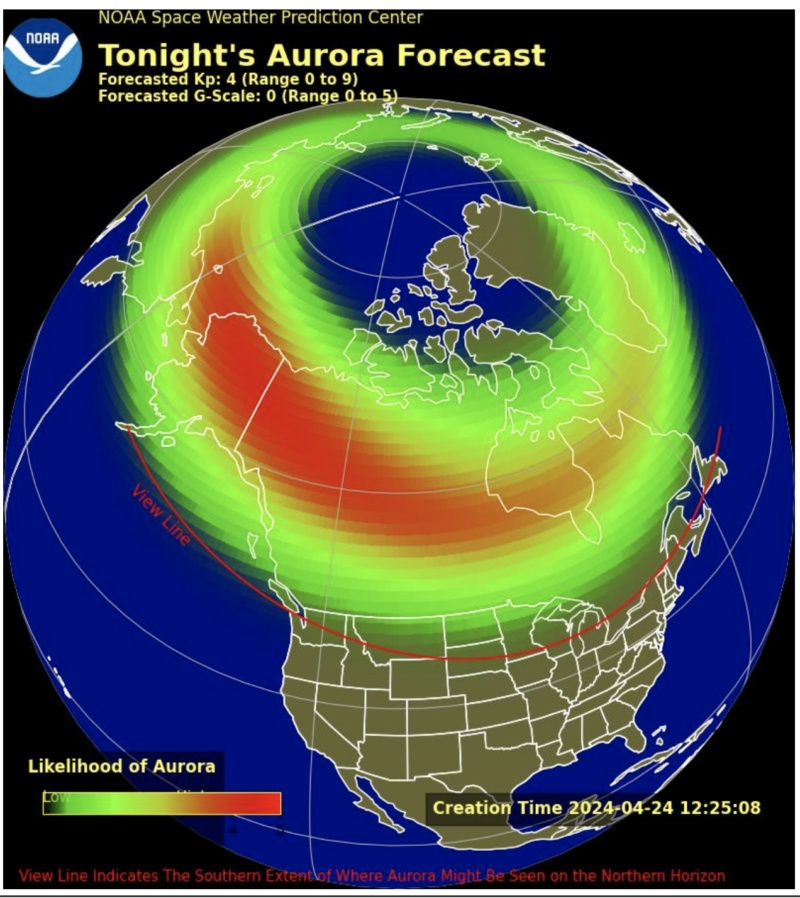
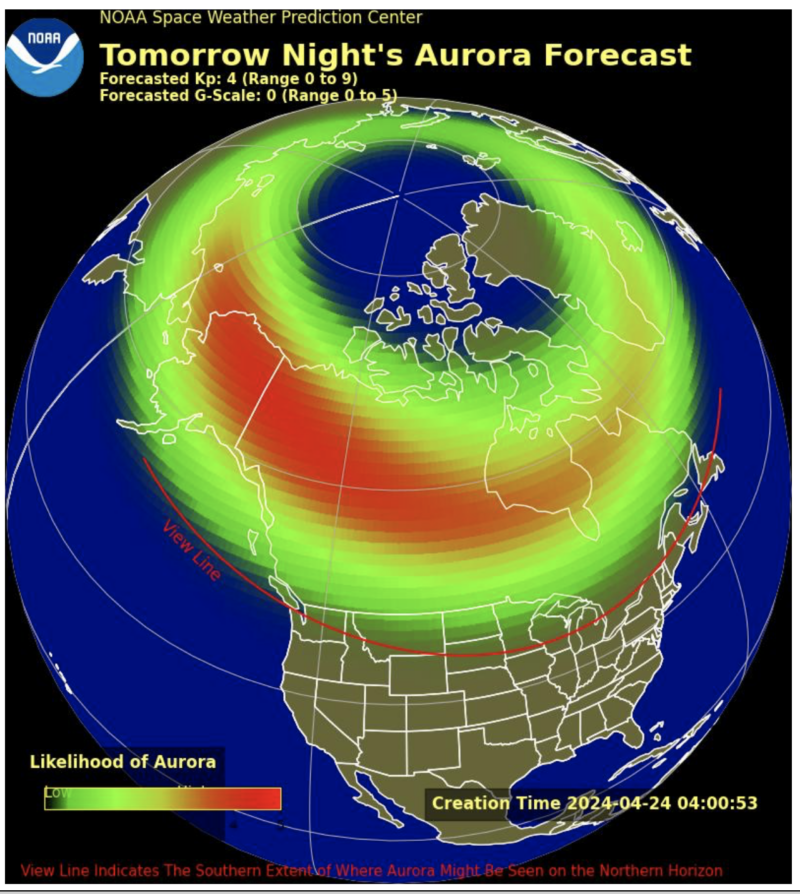
Sun news for April 23, 2024: 9 M flares in the past day!
Wow! Sun activity has reached high levels after 9 M flares were blasted over the past 24 hours. Equally exciting is that some of the flares were sympathetic. That’s when flares in seemingly unrelated locations on the sun occur nearly simultaneously, because they are actually connected to each other by invisible magnetic fields. We saw some of this yesterday with the active sunspot complex in the southwest. On top of the M flare fiesta, it’s been a crazy day for sunspots. As of yesterday, we reached a daily sunspot number of 278, the highest in 22 years, since it reached 281 in August 2002. And we now have 14 sunspot groups on the Earth-facing side, the highest – along with one other day – that it’s been in Solar Cycle 25 so far. What a day on the sun!
Last 24 hours: We observed lots of filament activity over the past day, with some of these filaments participating in the sympathetic flaring. Between 11 UTC yesterday and 11 UTC today, the sun released 26 flares: nine M flares and 17 C flares. The largest was an M3.6 flare produced at 3:19 UTC by AR3654 on April 23. Here’s the breakdown of the M flares from the past 24 hours:
M1.7, AR3647, 13:35 UTC on April 22. R1 (minor) radio blackout over Africa.
M1.1, AR3645, 14:55 UTC on April 22. R1 (minor) radio blackout off the west coast of Africa.
M1.6, AR3646, 15:19 UTC on April 22. R1 (minor) radio blackout over the Atlantic Ocean.
M2.8, AR3656, 15:50 UTC on April 22. R1 (minor) radio blackout over the Atlantic Ocean.
M1.1, AR3656, 16:30 UTC on April 22. R1 (minor) radio blackout over the Atlantic Ocean.
M1.5, AR3638, 21:16 UTC on April 22. R1 (minor) radio blackout over the Pacific Ocean east of Hawaii.
M1.1, AR3645, 23:18 UTC on April 22. R1 (minor) radio blackout over the Pacific Ocean west of Hawaii.
M3.6, AR3654, 3:19 UTC on April 23. R1 (minor) radio blackout over the Philippine Sea (the largest flare).
M3.0, AR3654, 8:21 UTC on April 23. R1 (minor) radio blackout over the Arabian Sea.
The lead flare producer of the day was AR3645, which fired off nine flares: two Ms plus seven Cs. Sunspot regions AR3656 and AR3654 also produced two M flares. There are four active regions showing potential with beta-gamma magnetic configurations: AR3639, AR3645, AR3646 and AR3647. The sun currently has 14 sunspot groups on its Earth-facing side, including newcomer AR3657. The sun has two coronal holes on its Earth-facing side, one near the disk’s center and one in the southeast.
Sun news for April 22, 2024: Bang! Activity is up
After a fairly calm Sunday, the sun has kicked it up a notch today. The sunspot region complex AR3638-AR3647 (AR3638, AR3643, AR3645 and AR3647) started firing off M flares at midday April 21 UTC time. There were also some near M flares, a C9.0 and C8.6. During the last 24-hour observation period from 11 UTC April 21 to 11 UTC April 22, these M and larger C flares had six coronal mass ejections (CMEs) associated with them. Current analysis has shown that all these CMEs were southward directed and do not have Earth-directed components. Additional data may update these determinations. This complex is the region that started producing continuous jets earlier this week. AR3638 has a beta magnetic classification and AR3647 has a beta-gamma magnetic classification. None of the regions in this larger group are especially complex magnetically. Nevertheless, they are producing some interesting action. Stay tuned for what’s next.
Last 24 hours: Solar flare activity increased over the current observation period (11 UTC yesterday to 11 UTC today). Sun activity is now at moderate levels due to four M flares. The total flare count is 18, four M flares and 14 C flares. The largest event of the period was an M3.4 flare at 21:44 UTC on April 21 from sunspot region AR3638. The region also produced an M2.2 at 15:07 UTC on April 21. Region AR3645 produced the other two M flares, an M1.0 at 12:39 UTC on April 21 and an M1.1 at 7:58 UTC on April 22. All of the M flares appear to have produced CMEs, but none of these eruptions have an obvious Earth-directed component. AR3638 and AR3645 have both shown slight growth in size. Other regions have either remained the same or decayed slightly. New regions AR3652, AR3653, AR3654, AR3655 and AR3656 were numbered this period. The sun has 13 sunspot groups on its Earth-facing side.
The sun in recent days

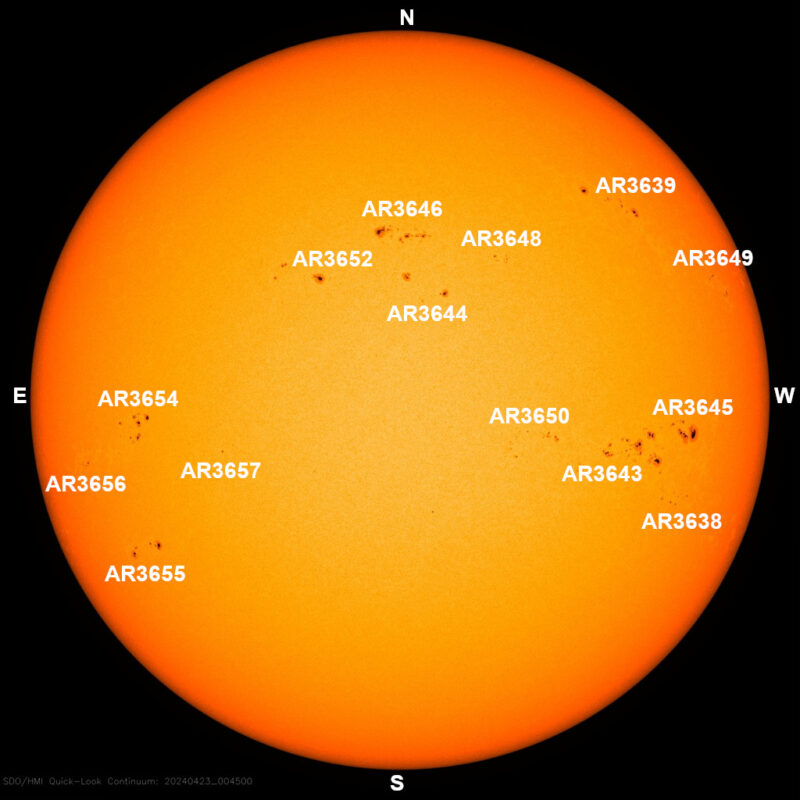
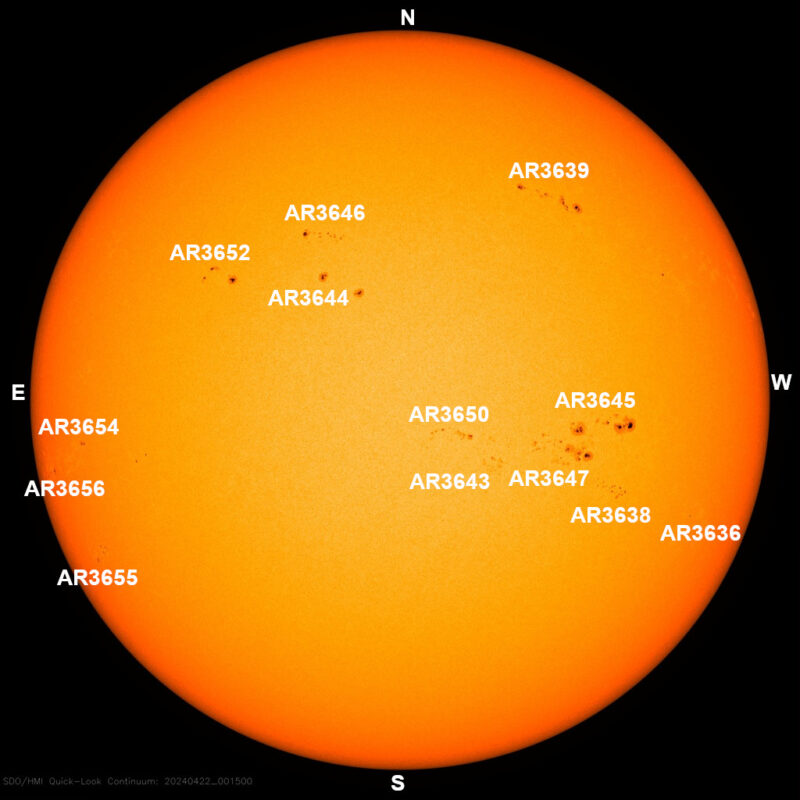


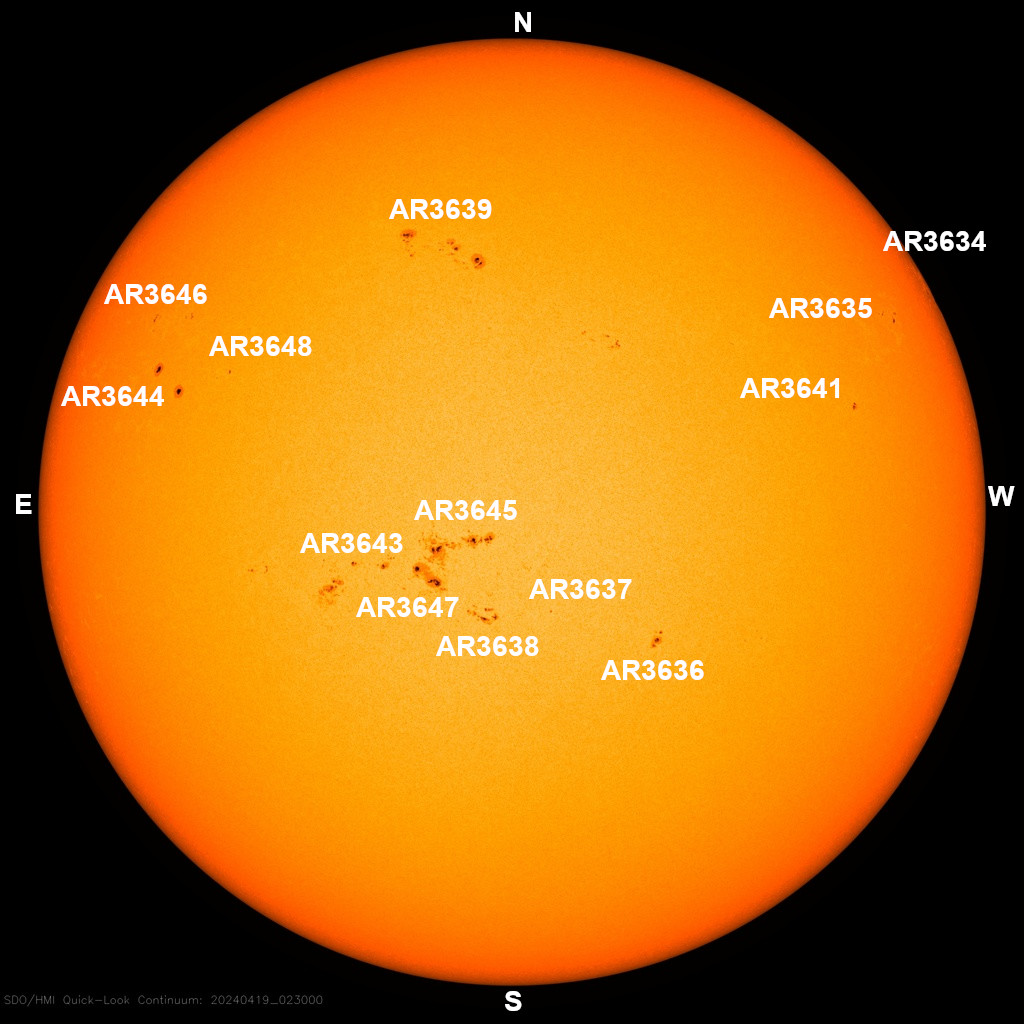

Sun images from our community
Are you a fan of sun images? We invite you all to send us your beautiful recent photos of sunspots and auroras. We love receiving them and sharing them! And to those of you who’ve already posted a photo to our community page, thank you.
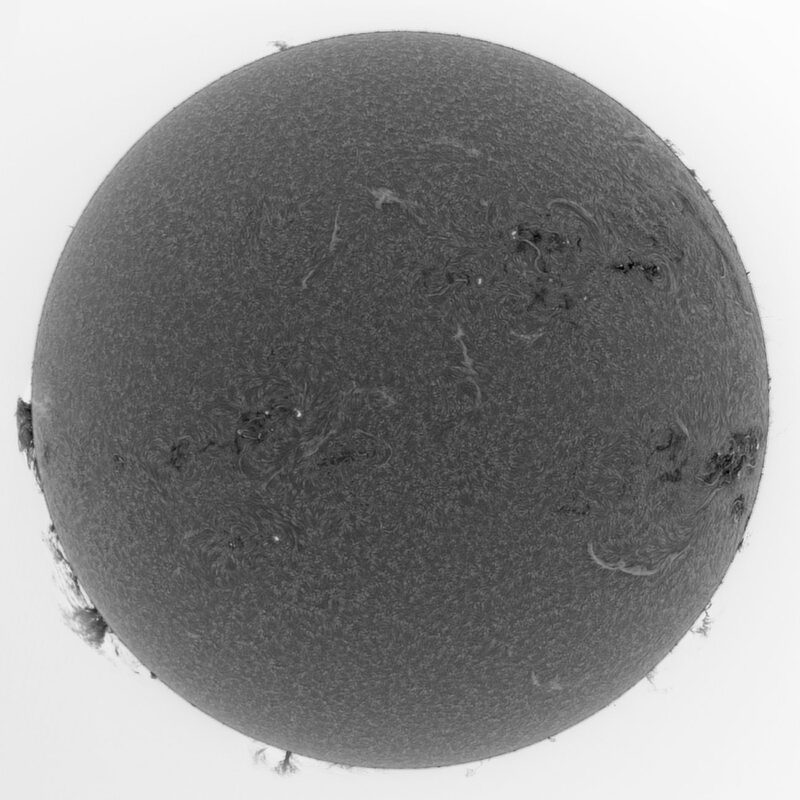
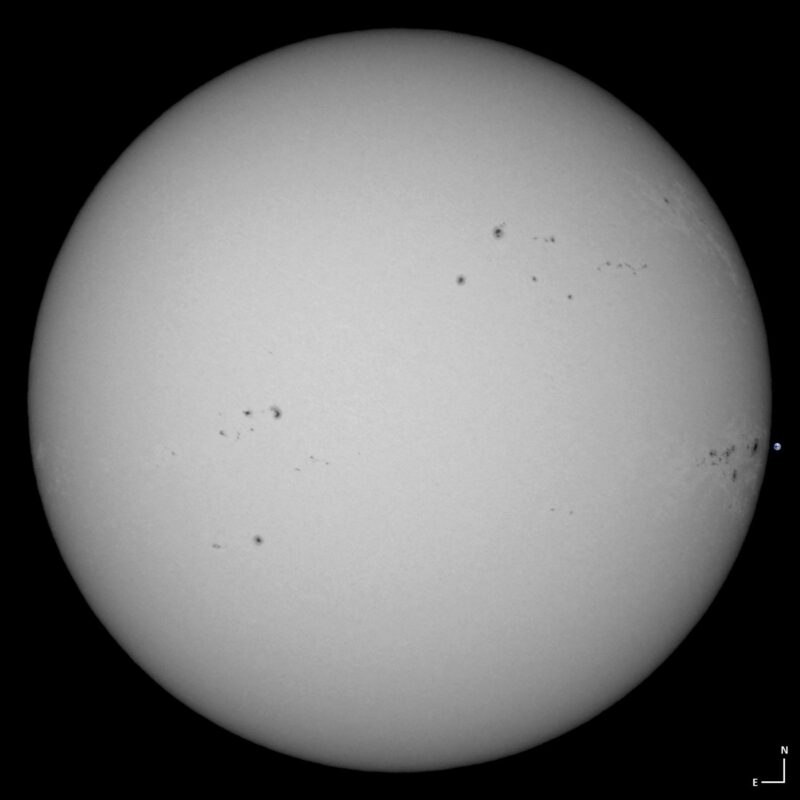
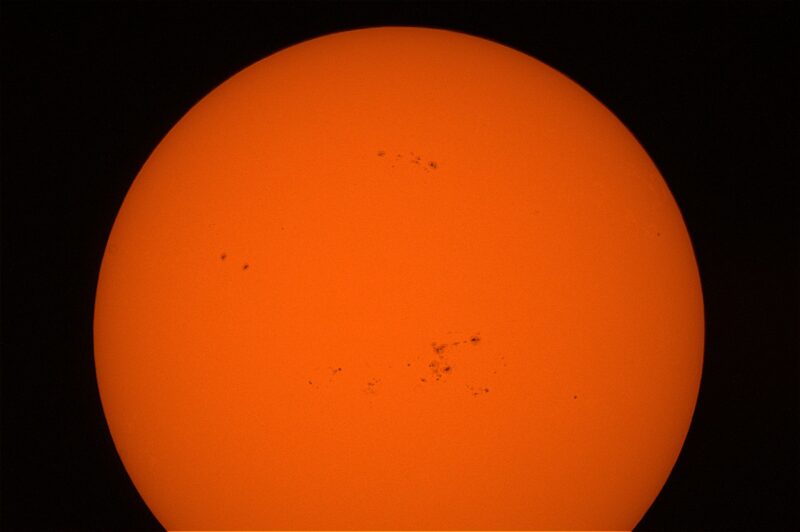
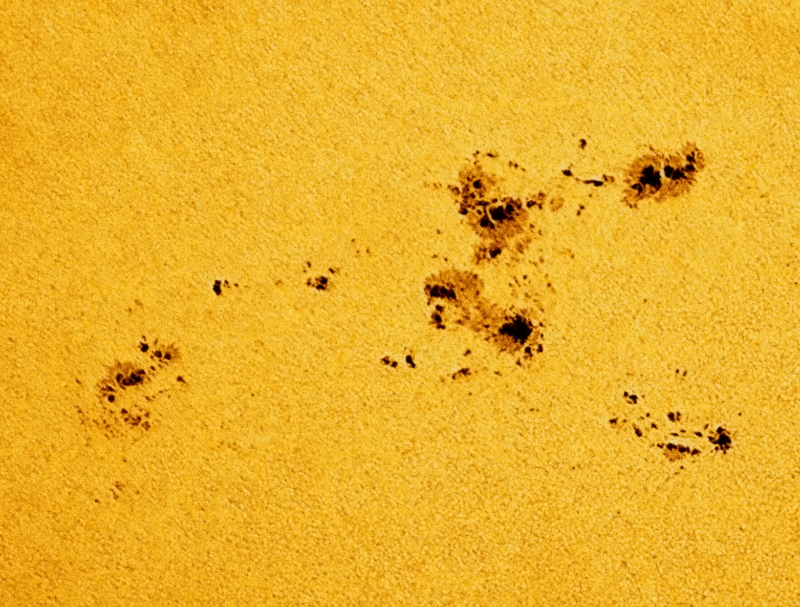
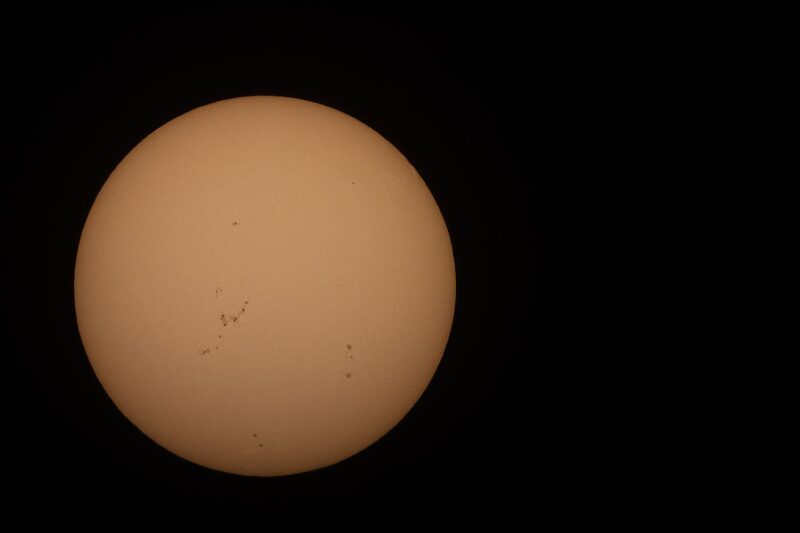
Bottom line: April 25, 2024, sun news. Sun activity is high. Flare and after-flare continue. CMEs and so auroras are on the way tonight or tomorrow.











